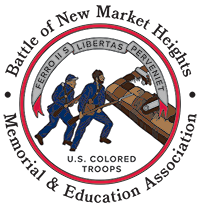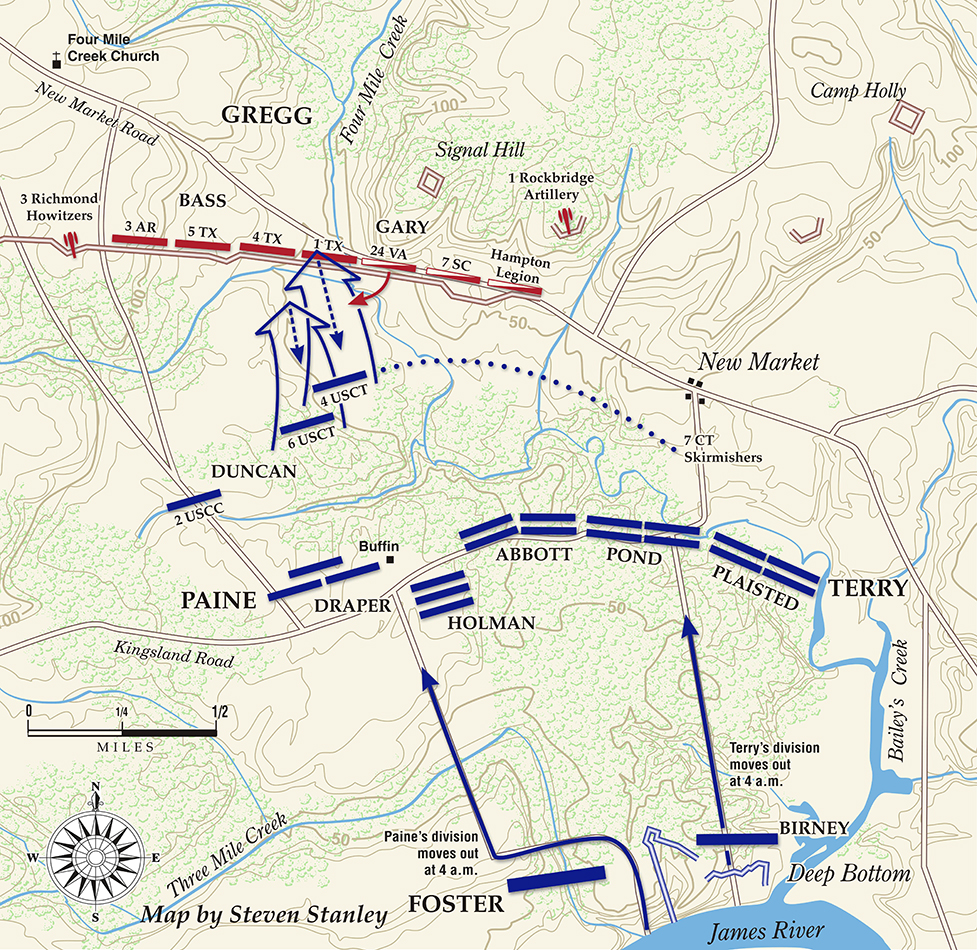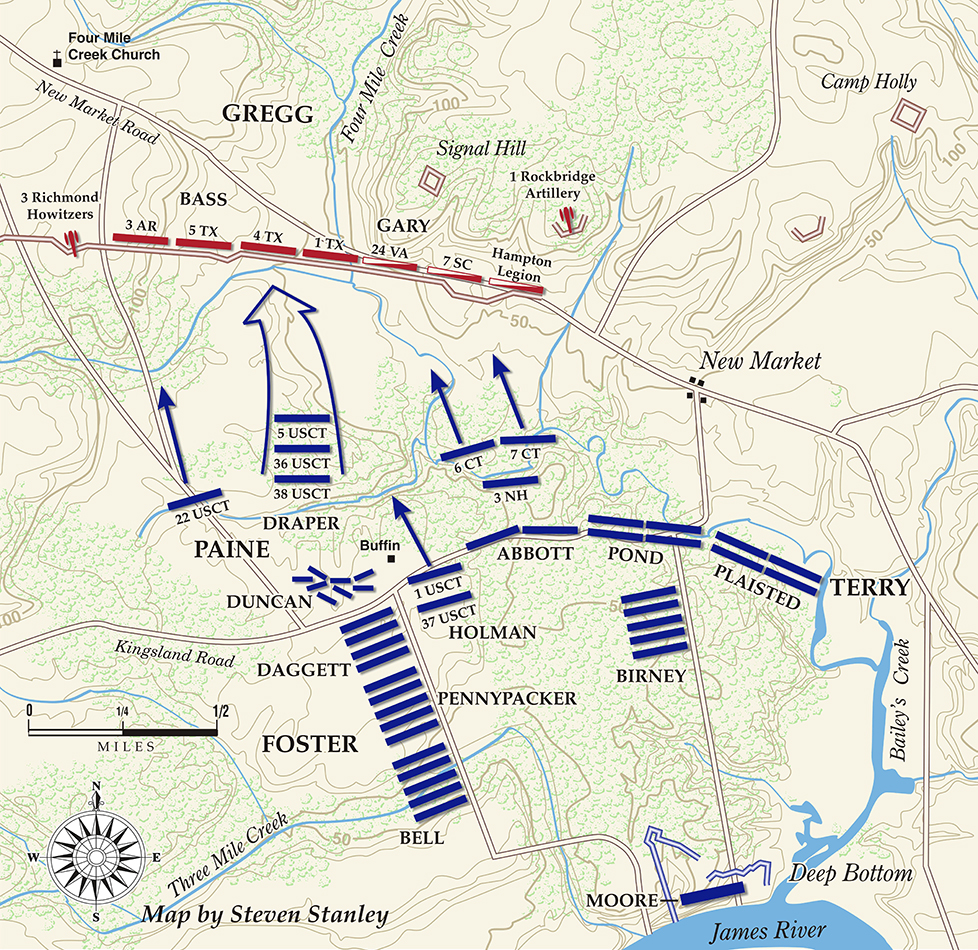The Battle of New Market Heights
by Jimmy Price
Following the Federal victories at Opequon Creek and Fisher’s Hill in late September 1864, Lt. Gen. Ulysses S. Grant prepared an offensive to prevent Confederate Gen. Robert E. Lee from reinforcing his troops in the Shenandoah Valley. Grant planned a two-pronged assault with Maj. Gen. George Gordon Meade’s Army of the Potomac striking at the Southside Railroad near Petersburg while Maj. Gen. Benjamin F. Butler’s Army of the James struck north of the James River to threaten the Confederate Capital.
Butler called his subordinates together on September 28th and outlined the plan, part of which called for Maj. Gen. David B. Birney’s X Corps to attack from the Deep Bottom Bridgehead and take New Market Heights. Spearheading this attack would be Brig. Gen. Charles Paine’s Third Division of the XVIII Corps, a unit comprised entirely of United States Colored Troops. The Army of the James crossed over on the night of September 28-29, 1864 and was in position by 5:00 AM. Facing the bluecoats were 2,000 veteran troops under the overall command of Brig. Gen. John Gregg. Lt. Col. Frederick Bass’ Texas-Arkansas Brigade and dismounted cavalry under Brig. Gen. Martin Gary manned the earthworks while the Rockbridge Artillery and 3rd Richmond Howitzers provided artillery support.
Paine displayed his inexperience as a commander when he designated only Col. Samuel A. Duncan’s Third Brigade (4th and 6th USCT) to take New Market Heights. Duncan’s men deployed in a skirmish line 200 yards long and soon encountered obstacles that hampered their movement. A marshy stream called Four Mile Creek ran across their line of advance and a slashing of abatis and chevaux-de-frise blocked access to the Rebel entrenchments. Duncan’s men advanced into the thick fog around 5:30 AM and, in the words of one survivor, were “all cut to pieces.” Intense musket and artillery fire shredded the ranks of the oncoming Federals and soon Col. Duncan was down with four wounds. The Third Brigade soon withdrew, losing 350 of its 700 effectives.
Paine then sent in the Second Brigade (5th, 36th, and 38th USCT) under the command of Col. Alonzo Draper. As the sun began to rise, Draper’s men went in over the same ground that Duncan’s men had crossed and they were soon entangled in the slashing. For thirty brutal minutes, Draper’s men endured a barrage from the Confederate lines before the Confederates began to withdraw. When the fire slackened the USCT’s burst through the slashing and advanced up the slopes of New Market Heights. Draper would lose 447 out of his 1,300 men. Overall, Paine lost 1 out of 3 men in the attack on New Market Heights.
While Benjamin Butler did not capture Richmond that day, the fighting prowess of the African American soldiers under his command was put on display for all to see. Throughout the entire course of the American Civil War, only sixteen black soldiers were awarded the Congressional Medal of Honor. Of that number, fourteen were awarded to the black troops who stormed New Market Heights.
“Breakthrough”
Although initially checked by severe fire from the Southerners, at about 8:30 a.m., Draper’s Brigade rallied and broke through the earthworks near where Four Mile Creek bisected the line.
Col. John H. Holman’s Brigade (22nd, 1st, and 37th USCI) supported Draper on the left.
The Confederates retreated toward the Richmond defenses along the Fort Harrison line.
“Three Medals of Honor” by Don Troiani: Courtesy of Don Troiani





